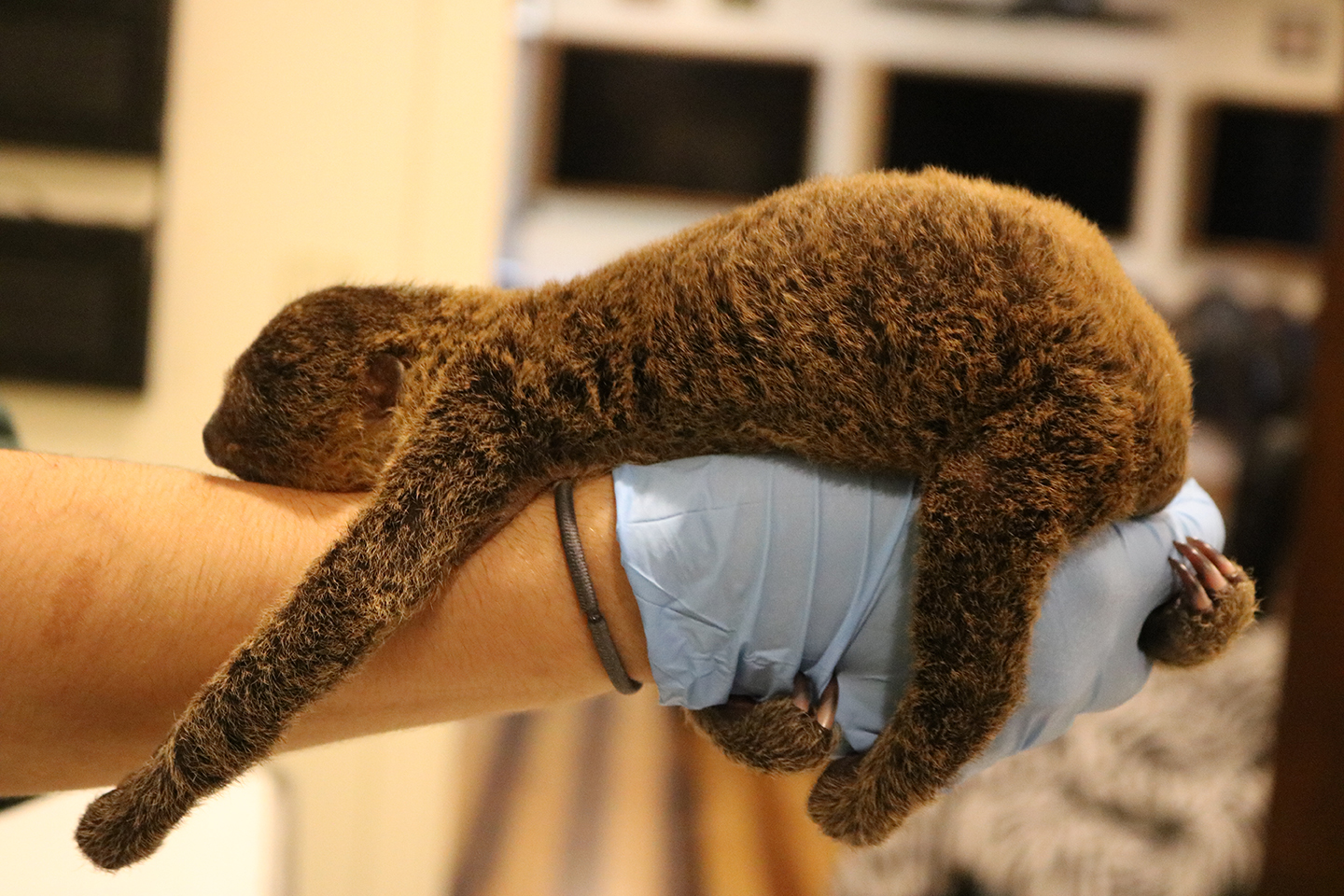Hattiesburg Zoo welcomed a new animal to its family on Feb. 5 when a Hoffman’s two-toed baby sloth was born.
Mo, the Zoo’s female sloth, gave birth to the one pound two ounce baby during the early hours on Sunday, Feb. 5. The approximately ten-year-old sloth is a first-time mom, which can often bring an added risk to the offspring.
However, she is doing well and recovering without any issues. The baby’s father Chewy, who the Zoo believes to be around five years old, is handling the new addition fine and remains in his usual calm state.
The Hattiesburg Zoo animal care team suspected Mo was pregnant from both physical signs and keeper intuition, but they were unable to confirm until she gave birth. The staff did conduct an ultrasound in late 2016, but it was inconclusive. The gestation period for sloths typically ranges from seven to ten months. It is very rare for sloths to give birth in a zoo or for zoos to have a baby sloth in its animal collection.

“We are grateful for the opportunity to be a part of such a rare experience. We hoped for this when Mo and Chewy joined our animal family, but we could not predict if it would ever happen. Our keepers are living and breathing baby sloth right now while they monitor the baby around the clock to ensure its health and livelihood,” Stephen Taylor, animal care manager for Hattiesburg Zoo, said.
The entire focus of the Zoo’s keeper staff has been the care and survivability of this baby animal for the last 11 days as the first days are a delicate time. Hattiesburg Zoo has engaged its animal care network and consulted with San Diego Zoo, Atlanta Zoo, and a zoo in Sweden, all of who have experienced sloth births first-hand, to confirm that the baby sloth is getting the appropriate care during this crucial time.
Right now, the baby is being fed puppy milk replacement every two hours through a nipple on a syringe. It is eating about seven to 15 milliliters per feeding. Baby sloths typically switch to solid food after about a month.
The baby was born fully furred, eyes open, clawed, and with teeth. However, baby sloths typically remain dependent on its mother for approximately a year.

Because of a baby sloth’s small internal anatomy, a DNA test is required to determine gender. The Zoo will send off a hair sample for DNA testing to a larger zoo and expects results soon. Once gender is determined, the Zoo will host a Facebook poll to give fans the opportunity to vote on the baby’s name.
“We are ecstatic about the birth of this baby. We know our Zoo friends love Mo and Chewy and will welcome this baby as well! We invite our nearby communities to visit the Zoo in person to celebrate this rare event and new addition with us. Sloths are popular, well-loved animals, and we anticipate many out-of-town guests will stop by for a visit too,” Rick Taylor, executive director of Hattiesburg Tourism and Convention Commissions, said.
The Zoo will now be moving the baby’s feeding sessions from behind the scenes to inside the exhibit as much as possible to give Zoo guests an opportunity to see the baby grow. The baby can be found in the Asbury Discovery Center glass exhibit with Chewy and Mo.
At this time, sloth experiences will not include Mo or the baby sloth until the baby matures more. Experiences will now be conducted with Chewy in the Asbury Discovery Center.




